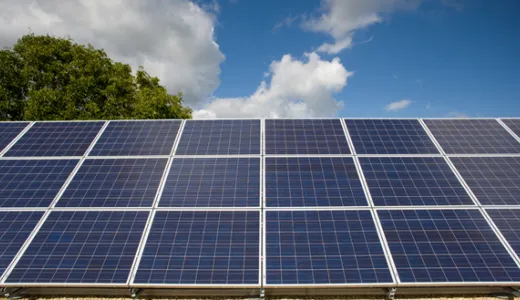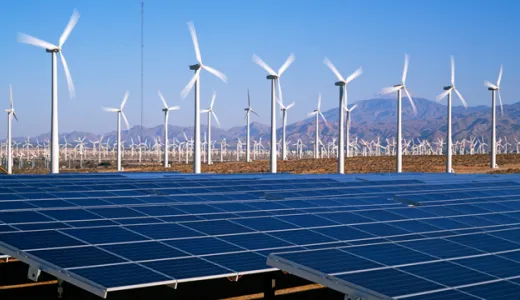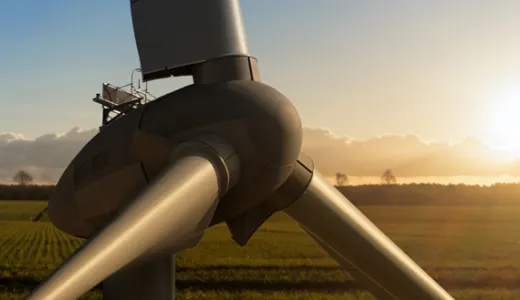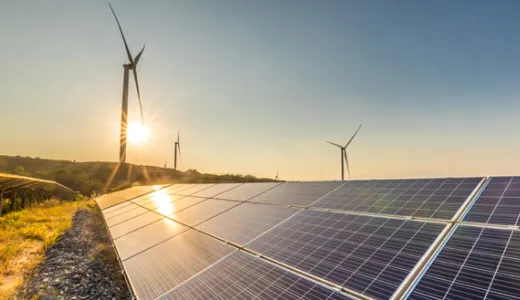Solar power: your questions answered
Solar power is one of the UK's largest renewable energy sources and therefore we're asked a lot of questions about it. Here we address some of the most frequently asked questions, myths and misconceptions surrounding solar energy, solar farms and solar panels.
Do solar panels need bright sunshine in order to work?
No. Solar panels don’t need direct sunlight to harness energy from sun, they just require some level of daylight in order to generate electricity. That said, the rate at which solar panels generate electricity varies depending on the amount of direct sunlight and the quality, size, number and location of panels in use.
Even in winter, solar panel technology is still effective; at one point in February 2022, solar was providing more than 20% of the UK’s electricity.1
In the UK, we achieved our highest ever solar power generation at 10.971GW on 20 April 2023 – enough to power over 4000 households in Great Britain for an entire year.2 and 3
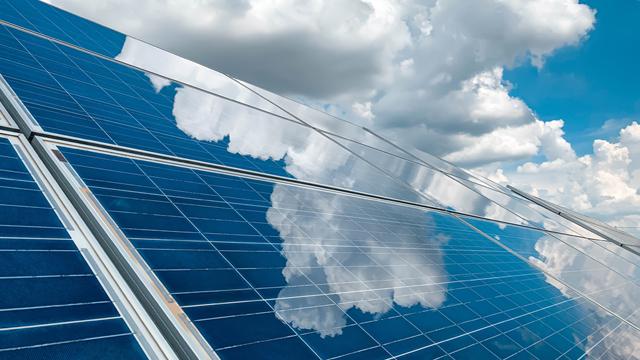
Do solar panels stop working if the weather gets too hot?
While it’s correct that solar panels can be less efficient in hot temperatures, this reduction is relatively small. According to Solar Energy UK, solar panel performance falls by 0.34 percentage points for every degree that the temperature rises above 25°C. Plus, the longer days and clearer skies mean solar power generates much more electricity during the summer, even if their efficiency falls slightly.
Is solar energy expensive to produce?
Solar is actually the most affordable renewable energy in the UK.
According to the International Energy Agency, there are some circumstances where solar photovoltaic (PV) is now the cheapest electricity source in history.4 This is because the price of solar has fallen sharply around the world – including in the UK, where the cost of installing solar panels has decreased by 60% since 2010.5 The efficiency of solar panels and other system components also continues to improve.
More than 183,000 solar photovoltaic installations were installed across the UK last year, exceeding the total amount installed in 2022 by more than one third. This reflects the growing number of UK homeowners who are turning to renewable energy to heat and power their homes.6
Don’t solar farms take up large areas of land that could be used for farming?
Solar farms can provide valuable income for farmers and they can still be used for grazing – in fact, sheep can help to keep solar farms maintained.
As solar parks generate income, they provide UK farmers with a revenue stream to continue food production on their land and support other aspects of their agricultural business. Plus, solar farms can actually help to give intensively farmed land an opportunity to recover, while still providing income for the farming business.
Agrivoltaics is an innovative approach that enables solar energy generation and agricultural practices. Growing crops underneath solar PV panels has proven to have many benefits. The raised solar panels can shield plants from harsh weather conditions such as excessive heat, the cold and UV damage, often resulting in higher yields for farmers.7&8
The solar industry is also working closely with Britain’s farmers to reduce their energy costs and improve the sustainability of their operations.
Solar farms: facts and figures1
|
Does solar panel manufacturing produce more carbon emissions than the panels save over their lifetime?
No. In fact, solar projects save thousands of tonnes of carbon emissions over their lifetime.
While some carbon is emitted in the manufacture of solar panels – as with all manufactured products – claims that solar panels produce more carbon than they save are false. Research has shown that the carbon payback period for solar panels is on average 1-4 years.9
This means that over a solar panel’s lifetime – typically 30 years10 – it will generate zero-carbon and zero-pollution electricity for decades after any carbon emitted during its production has been paid back.
Many solar projects also include other elements that actively remove carbon from the atmosphere, such as planting trees or hedgerows, which can offset any carbon emitted during the manufacturing of the panels.
The UK's first transmission-connected solar farm, which went live in 2023, is expected to generate enough to power the equivalent of over 17,300 homes annually and displace 20,500 tons of CO2 each year compared to traditional energy production.
As manufacturing processes advance, it’s likely that the carbon payback period will decrease further.
Are solar panels recyclable?
Yes. There are well established industrial processes for this and, in most cases, up to 99% of the materials in a solar panel are recyclable.1
Solar panels are usually made from silicon, or another semiconductor material, installed in a metal panel frame with a glass casing, all of which can be extracted, separated and recycled or reused. The remaining one percent is an encapsulant material that bonds the layers of a panel together.
There are organisations both in the UK and Europe that specialise in solar recycling and they’re working with solar developers to minimise electrical waste and recycle old panels in line with the Waste from Electrical and Electronic Equipment (WEEE) regulations.11
This means that, when a solar energy system comes to the end of its lifetime, the environmental impact of its decommissioning is minimised and adheres to the highest possible standards of sustainability.
Does the energy produced from solar panels go to waste if it’s not used right away?
The amount of sunlight the earth receives in just one hour is enough to meet the electricity demands of every human being for a year.12 This means that the amount of electricity generated by solar farms could potentially outstrip the amount that’s required at that particular time.
Fortunately, there are solutions to make sure excess solar energy doesn’t simply go to waste:
1. Storing energy to be used later
Excess electricity can be captured and stored, to be used at a later time when there’s not enough electricity being generated to meet demand. The most popular option for this is battery storage, but there are other methods of storage being developed all the time.
Find out more about renewable energy storage
2. Sharing energy with neighbouring countries
Electricity interconnectors are high-voltage cables that allow excess power to be traded and shared with neighbouring countries. When supply exceeds demand, we can send the excess electricity to another country and vice versa.
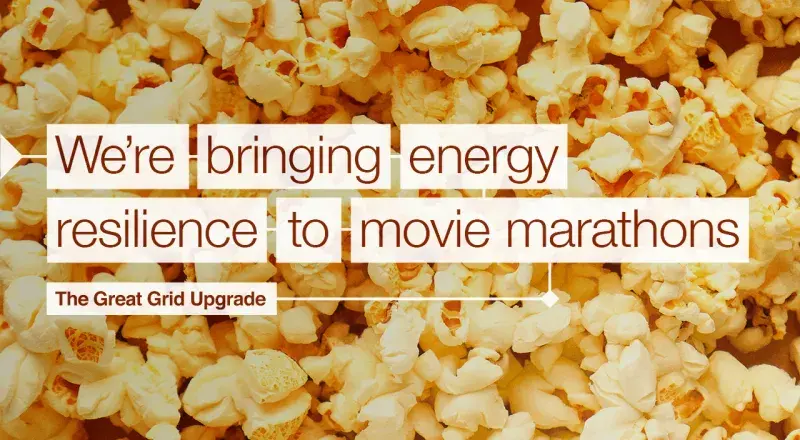
Upgrading the UK’s electricity grid to maximise on clean energy
In order for homes and businesses to use cleaner, greener energy, more renewables – such as solar power and wind power – will need to be connected to the electricity grid. To do this, we will need to upgrade the existing grid, as well as building new infrastructure, to reinforce the network and make sure this clean electricity can be transported from where it’s generated to where it’s needed.
The Great Grid Upgrade is the largest overhaul of the grid in generations and will make sure everyone in England and Wales has access to clean, secure energy.
Do solar panels cause issues with glint and glare?
Solar panels are designed to absorb light – as the more light a panel absorbs, the more power it will generate – so glint and glare from them are not a problem. The solar industry has developed high-tech, anti-reflective coatings and ultra-transparent glass to improve panel efficiency and, in fact, solar panels are less reflective than many common building features, such as windows.
When it’s not sunny, how will we have enough clean energy to power the country?
Because electricity generation from natural sources like solar or wind energy can be intermittent, there are a variety of solutions for providing clean energy that doesn’t rely on the sun or wind.
Find out how we're making sure that there’s enough clean energy to meet demand, even when the wind isn't blowing and the sun isn't shining.
Last updated: 1 Mar 2024
The information in this article is intended as a factual explainer and does not necessarily reflect National Grid's strategic direction or current business activities.
Sources:
1 Briefing | Fact Checker (solarenergyuk.org)
2 Britain's Electricity Explained: 2023 Review | National Energy System Operator (neso.energy)
3 Average gas and electricity usage | Ofgem
4 Outlook for electricity – World Energy Outlook 2020 – Analysis - IEA
5 UK rooftop solar behavioural research (publishing.service.gov.uk)
6 2023: A record-breaking year for MCS and small-scale renewables - MCS (mcscertified.com)
7 Agrivoltaics: How solar and farming can go hand in hand - Cero Generation
8 Farming and solar panels can work together – here’s the proof | Greenpeace UK
10 Executive summary – Solar PV Global Supply Chains – Analysis - IEA
11 Electrical and electronic equipment (EEE) covered by the WEEE Regulations - GOV.UK (www.gov.uk)
